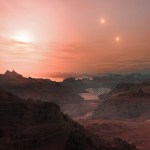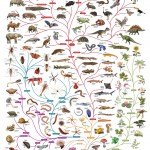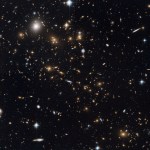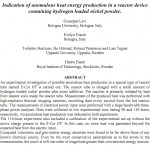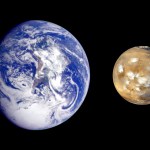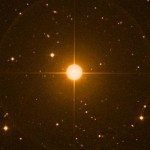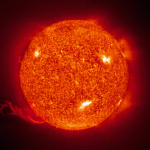Fusion
As our planet makes more and more noise, we can't help but wonder why no one is paying attention. Are we alone in the universe? Or alone in our desire to discover new worlds? PZ Myers says "Spaceship building is never going to be a selectively advantageous feature — it’s only going to emerge as a spandrel, which might lead to a species that can occupy a novel niche." Humanity could tread that path, following our dreams to the stars. But even then, we might only find extraterrestrials in the form of well-adjusted slime blobs, content in their otherworldly ecosystems.
If there are other tech-…
"Ignorance more frequently begets confidence than does knowledge: it is those who know little, and not those who know much, who so positively assert that this or that problem will never be solved by science." -Charles Darwin
There are problems with science today, no doubt. With all the knowledge we've accumulated about the Universe, from the smallest subatomic scales to the farthest recesses of deep space, there are still realms and regimes where our best theories fail, where the predictions and the data don't match, and where no known explanation is sufficient for the phenomena that shows up…
"I see a lot of new faces. But, you know the old saying, 'out with the old, in with the nucleus.'" -The Simpsons
Looking around the Universe today, there's no doubt that there's plenty of hydrogen and helium around; after all, it's the nuclear fusion of hydrogen into helium that powers the vast majority of stars illuminating the entire cosmos!
Image credit: ESA/Hubble, NASA and H. Ebeling.
But here on Earth, hydrogen and helium are only a small part of the world we inhabit. By mass, hydrogen and helium combined make up far less than 1% of the Earth, and even if we restrict ourselves…
"Science literacy is a vaccine against the charlatans of the world that would exploit your ignorance." -Neil deGrasse Tyson
Well, I guess it's that season again. The charlatan who claims to have invented a cold fusion device -- the same device whose flaws were exposed here two years ago -- has just held an "independent test" of his device, and there's now a physics paper out claiming that this device works, and must be powered by some type of nuclear reaction!
Image credit: G. Levi et al.; get the whole paper here: http://arxiv.org/pdf/1305.3913v2.pdf.
Well.
Look, let's get a few things…
“We are much closer today to being able to send humans to Mars than we were to being able to send men to the moon in 1961, and we were there eight years later. Given the will, we could have humans on Mars within a decade.” -Robert Zubrin
Of all the planets in the Solar System beyond our own, none has captured our imagination quite like Mars has.
Image credit: NASA, via http://photojournal.jpl.nasa.gov/jpeg/PIA02570.jpg.
From science-fiction fans to scientists and everyone in between, our understanding of the red planet is presently greater than it ever has been in the past. With multiple…
The Astrophysicist, when he has time, will have something to say about his reading of the physics of the material Tom Whipple sums up.
This situation however seems to be changing following a lengthy interview with a fellow out in Berkeley, California by the name of Robert Godes of Brillouin Energy. He has been working in this field for the last ten years and says that he not only has a reliable heat-producing device, but also understands the physics behind it - which he calls the Quantum Fusion Hypothesis. He says that this theory of just how low-energy nuclear reactions work has allowed…
What's the application? The goal of laser ignition fusion experiments is to heat and compress a target to the point where the nuclei of the atoms making up the sample fuse together to form a new, heavier nucleus, releasing energy in the process. Nuclear fusion is, of course, what powers stars, and creating fusion in the laboratory has been the holy grail (well, a holy grail, at any rate) of nuclear physics research for the last sixty-plus years.
What problem(s) is it the solution to? 1) "Can we create fusion reactions in a laboratory setting on Earth?" 2) "How can we get more helium without…
Let's say we're having a nice day here on Earth; the Sun is shining, the clouds are sparse, and everything is just looking like a peach:
And then Lucas goes and tells me,
Oh my God, Ethan! It's Armageddon! An asteroid is coming straight for us! You've got to stop it!
Really? Me? Well, how would I do it? Let's say we've got some reasonably good asteroid tracking going on, and we've got about 2 months before the asteroid is actually going to hit us. We'd like to do something with the situation on the left, to avoid the situation on the right:
Well, what we really have to do is change the…
Ahh, stars. Giant furnaces of nuclear fusion. Doing the stuff our Sun does, burning hydrogen fuel into helium (among other things) and emitting lots of visible light and energy in the process.
But when we take a look at brown dwarfs, they aren't like normal (i.e., main sequence) stars like our Sun. Instead of burning hydrogen into helium for their fuel, brown dwarfs don't generate enough pressure to make that happen; they can only burn hydrogen into deuterium.
Let's go over what the differences here are. A hydrogen nucleus is just a proton, with a mass of 938.272 MeV/c2. (I use these units…
What's going to happen to all the stars in the Universe as they get older? Well, just as nothing can live forever, stars can't live forever also. Why? Because they run on fuel: burning hydrogen into helium, for example. When they run out of fuel, something's gotta give. Barbara Ryden reminds us of an excellent and appropriate quote by Dylan Thomas:
Do not go gentle into that good night.
Rage, rage against the dying of the light.
But what exactly happens to the star depends very sensitively on what the mass of the star is.
If you've got a tiny little star, less than about 40% of the mass of…
